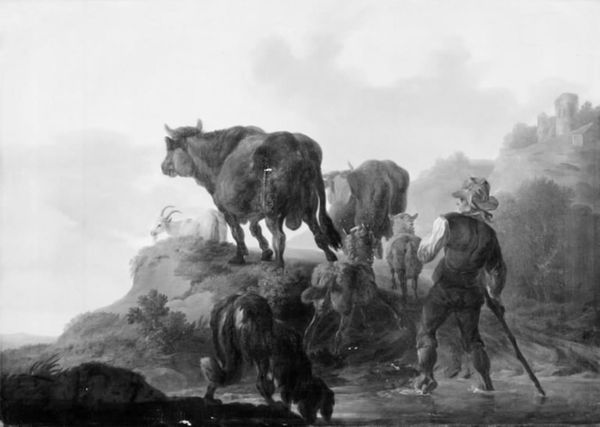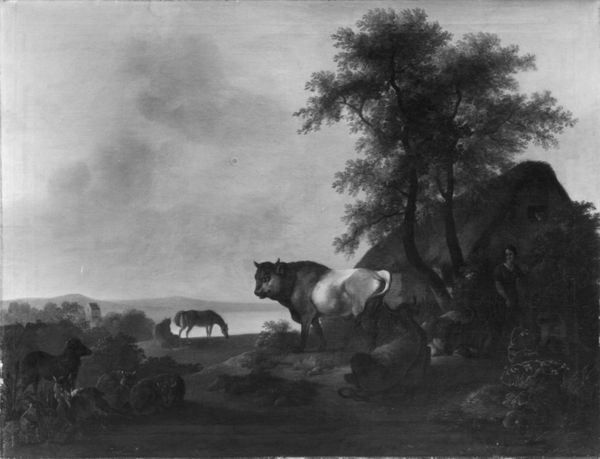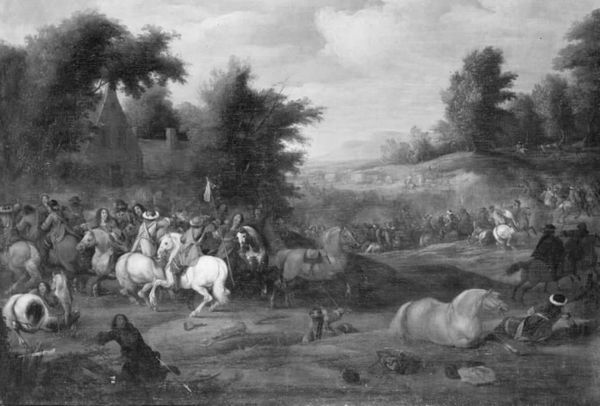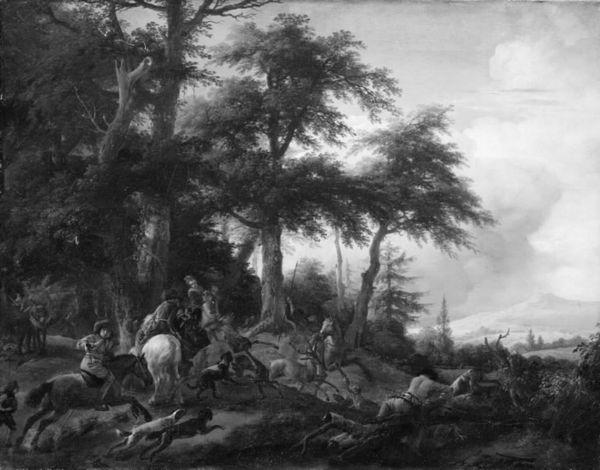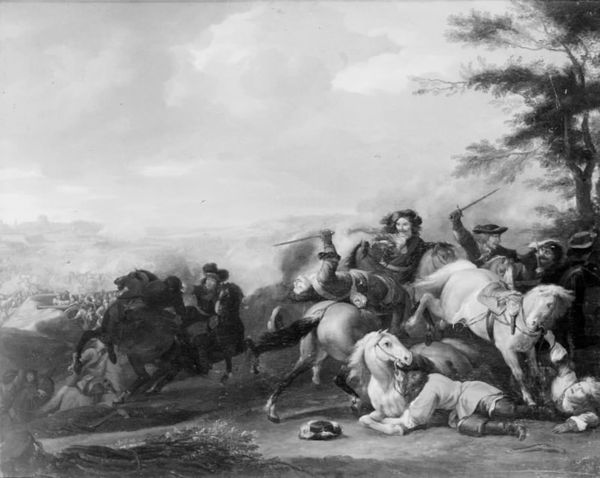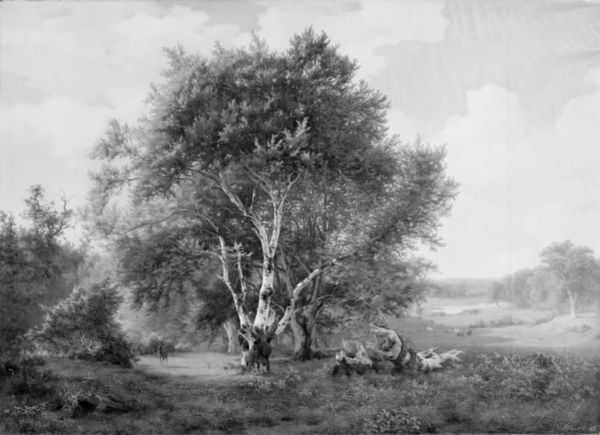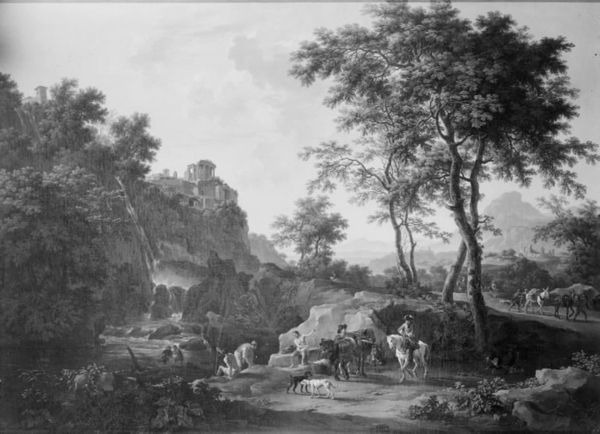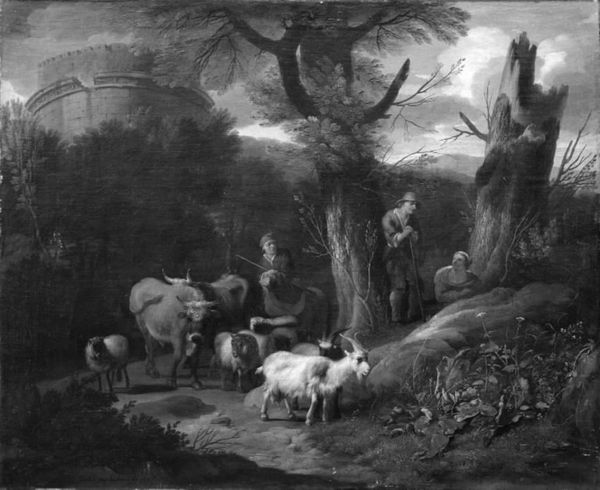
painting, plein-air
#
animal
#
painting
#
countryside
#
plein-air
#
landscape
#
figuration
#
romanticism
#
monochrome photography
#
monochrome
#
monochrome
Dimensions: 82.5 cm (height) x 107.5 cm (width) (Netto)
Editor: This painting, “Wild Horses in a Stud Farm” by Christian David Gebauer, painted in 1821, has a rather melancholic feel, almost like a scene from a dream. What do you make of it? Curator: Well, let's think about this image in its historical context. Consider the Romantic era’s fascination with nature and the "sublime." How does Gebauer's portrayal of these wild horses in a stud farm engage with early 19th-century ideals about the relationship between nature and civilization? What statement, if any, does the setting within the stud farm make about humanity’s control over the natural world? Editor: That's interesting. I hadn't thought about it as a statement on control. I was more focused on the beauty of the landscape and the dynamic movement of the horses. Do you think Gebauer intended it as a commentary? Curator: It's difficult to ascertain an artist's true intentions, but we can consider the artistic conventions of the time. Landscape painting was often used to express national identity and to idealize rural life, but it could also represent a longing for something beyond industrialization. What do you see in the way the horses are depicted in relation to the natural setting versus the presence of the buildings in the background? Is there tension between wildness and domesticity? Editor: I guess I assumed that Romanticism usually depicted idealized versions of the world... it seems he is critiquing control but simultaneously, also praising its effectiveness... Almost like this idealized world is only possible because of the nearby farm and our influence on these creatures. Curator: Exactly. The placement of the buildings subtly acknowledges the impact of civilization and poses a complicated view of the Romantic ideals of the time. Art rarely exists in a vacuum and its social commentary will persist regardless of our recognition of it! Editor: Thanks, I see how placing it within its cultural context enriches the work and opens a pathway to understanding. I’ll be more mindful of that in the future.
Comments
No comments
Be the first to comment and join the conversation on the ultimate creative platform.


